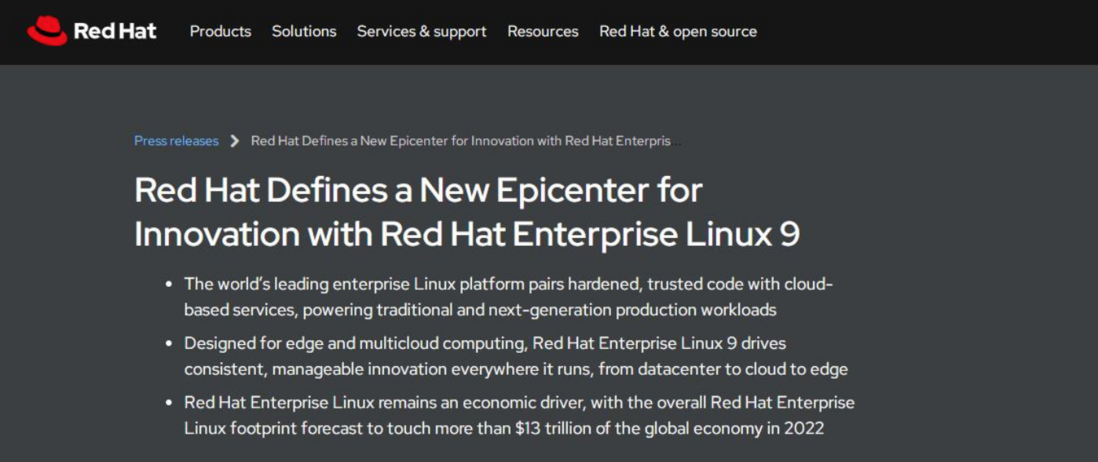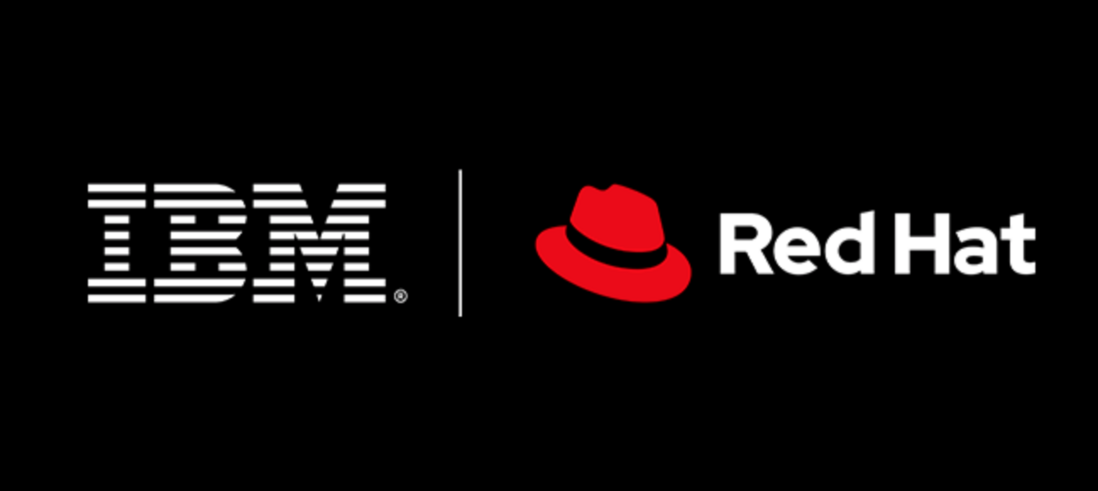At the recently held Red Hat Summit, Red Hat released the next-generation enterprise IT infrastructure upgrade - the flagship version of the IT enterprise operating system Red Hat Enterprise Linux 9, in order to promote the entire open hybrid cloud from More consistent innovation from bare metal servers to cloud providers and the edge of enterprise networks.
Red Hat Enterprise Linux 9 New Feature Highlights
The next-generation Red Hat Enterprise Linux 9 upgrade goes beyond servers and data centers to the edge and multi-cloud, with dramatic improvements in security. Among them, some functions can help solve hardware-level security vulnerabilities such as Spectre and Meldown, such as the function of helping user-space processes to create memory areas that potentially malicious code cannot access, the platform can also meet customer security needs, supporting PCI-DSS, HIPAA, etc. .
- Rich edge management
Available as a service, Red Hat Enterprise Linux 9 oversees and scales remote deployments with greater control and security features, including Red Hat OpenShift 4.10 zero-touch provisioning, system health visibility, and more responsive Vulnerability mitigation, all with just one interface.
Red Hat Enterprise Linux 9 supports the FIDO Device Onboarding Technology Preview, which reduces deployment time by encrypting the authentication system and creating a secure channel for configuration and login management platforms.
In addition, Red Hat Enterprise Linux 9 supports Gnome Kiosk Mode, which provides a lightweight graphical desktop environment for single applications such as payment terminals.
Red Hat Enterprise Linux 9 also extends a series of new system roles, such as Postfix, high availability clustering, firewall, Microsoft SQL Server and Web console, providing automated workflows for creating specific configurations.
Red Hat Enterprise Linux 9 now not only embeds the GNU Compiler Collection 11 and the latest versions of the LLVM, Rust and Go compilers, but also supports live kernel patching via the Linux web platform, enabling deployment across large distributed systems without command line tools Update the app.
- specific safety features
Smart Card Authentication: Users can use smart card authentication to access remote hosts through the RHEL web console (Sudo, SSH, etc.).
Additional Security Profiles: Users can use security standards such as PCI-DSS and HIPAA to improve security information collection and remediation services such as Red Hat Insights and Red Hat Satellite.
Detailed SSSD logging: Enterprise single sign-on framework SSSD now includes more event logging details, including completed tasks, errors, authentication flows, etc. A new search feature also enables users to analyze performance and configuration issues.
Integrated OpenSSL 3: To support the new OpenSSL 3 cryptographic framework, Red Hat Enterprise Linux's built-in utilities have been recompiled.
SSH root password login disabled by default: It's never a smart idea for users who have been SSHing into servers with root password. Now, by default, Red Hat Enterprise Linux will disable this action to protect against hackers who try to log in as "root" through brute force password attacks.
- Automatic container rollback
The next-generation Red Hat Enterprise Linux 9 operating system integrates container management technology. By using Red Hat Enterprise Linux's integrated container management technology Podman, it can automatically roll back containers: this technology can automatically detect whether newly updated containers fail to start, and then roll back containers. The container rolls back to the previous working version.
- New Image Builder Service
Red Hat Enterprise Linux 9 supports the delivery of key operating system functions as a service that supports existing capabilities of the core platform, custom file systems, and image creation and virtualization technologies from major cloud providers (such as Amazon Cloud Services, Google Cloud, Microsoft Azure and VMware, etc.).
- Other New Feature Highlights
Integration with AWS Graviton processors;
Improvements to address hardware-level security vulnerabilities like Spectre and Meltdown;
A new integrity measurement architecture is introduced;
WireGuard VPN technology is available as an unsupported technology preview;
Improved automation;
Python 3.9
Node.js 16
Linux Kernel 5.14
In 2014, Red Hat announced the acquisition of Community Enterprise Linux Operating System. In July 2019, IBM acquired Red Hat for another $34 billion. Prior to this, in May 2019, Red Hat just released the official version of the Red Hat Enterprise Linux 8 operating system.
The release of Red Hat Enterprise Linux 9 is the first official version of the new system released by Red Hat after it was acquired by IBM, and it is also the first production version built on CentOS Stream. CentOS Stream is a continuous delivery Linux distribution with preview features to be merged into Red Hat Enterprise Linux.
Red Hat Enterprise Linux 9 is expected to be generally available in the next few weeks. The release of this new version once again confirms the fact that Red Hat Enterprise Linux is an important player in the open source ecosystem.
Reference link: https://www.zdnet.com/article/red-hat-enterprise-linux-9-security-baked-in/



**粗体** _斜体_ [链接](http://example.com) `代码` - 列表 > 引用。你还可以使用@来通知其他用户。